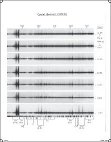
Evolution with heliocentric distance r
Bennett (1970 II) from r = 0.57 to 1.07 a.u. 381-434 nm
(OHP, European Southern Obs. = ESO)

| Plate captions |  |
Ib-04 Evolution with heliocentric distance r Bennett (1970 II) from r = 0.57 to 1.07 a.u. 381-434 nm (OHP, European Southern Obs. = ESO) |
| Plate captions | 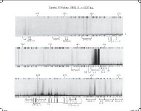 |
Ic-24 Individual comet 1P/Halley r = 0.97 a.u. 332-432 nm (ESO) |
| Plate captions | 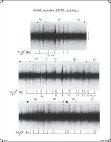 |
Id-10 Tail emissions Kohoutek (1973 XII) r = 0.46 a.u. 613-712 nm H2O+ (3 bands) (Lick) |
| Plate captions | 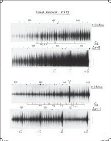 |
Ie-11 Molecular emissions Kohoutek (1973 XII) r = 0.46 a.u. 486-517 nm C2 Dv = 0 Kohoutek (1973 XII) r = 0.52 a.u. 534-564 nm C2 Dv = -1 (Lick) |
| Plate captions | 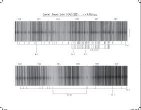 |
If-08 Atomic emissions Ikeya-Seki (1965 VIII) r = 0.063 a.u. (~14 solar radii) 379-401 nm Ca+, Fe, Ni, Co, CN (Kitt Peak National Obs.) |
| Plate captions | 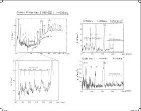 |
IIa-16 Vacuum ultraviolet H, C, O, S, CO 1P/Halley (1986 III) r = 0.84 a.u. 140-200 nm (IUE) 103 P/ Hartley 2 (1991 XV) r = 0.96 a.u. 120-680, 180-230 nm (HST) |
| Plate captions | 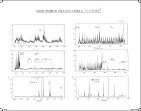 |
IIb-32 Optical region C3, CN, CH, C2, NH2, CH+ 122P/1995 S1 (de Vico) r = 0.66 a.u. 401-408, 421-433, 550-577 nm (McDonald) |
| Plate captions | 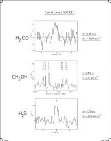 |
IId-08 Radio region H2CO, CH3OH, H2S Levy (1990 XX) r = 1.36, 1.32 a.u. 1.33, 2.07, 1.78 mm (Institut de Radioastronomie Millimétrique = IRAM) |